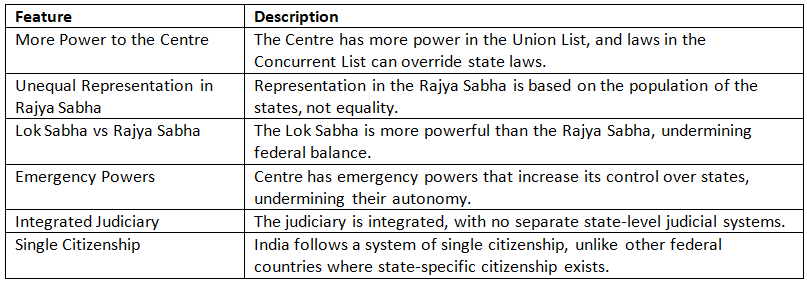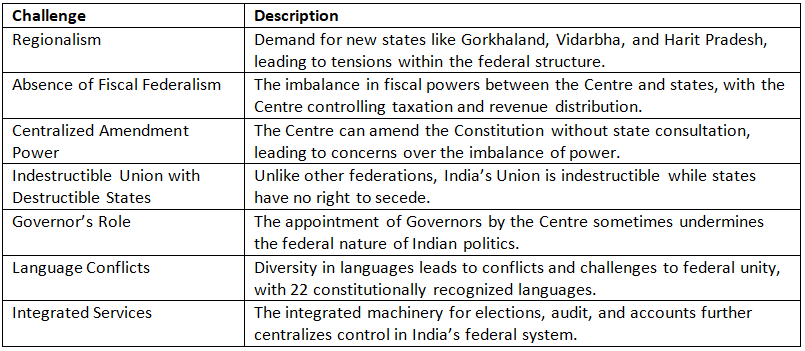Cheat Sheet: The Indian Federal System Overview | Indian Polity for UPSC CSE PDF Download
Introduction
This document presents a detailed chronology of the federal system in India, exploring its features, evolution, and challenges. The Indian Constitution incorporates both federal and unitary characteristics, making it a unique system of governance. The document highlights the emergence of federalism in India, explains the types of federations, and outlines the federal and unitary features of the Indian Union. It also discusses various issues and challenges that Indian federalism faces, including regionalism, fiscal imbalance, and language conflicts. The information is organized for easy reference and quick revision, particularly for students preparing for exams such as the UPSC.

Federalism in India: Basic Understanding

Federalism in India: Characteristics

Evolution of Federalism in India

Federal Features of the Indian Union

Unitary Features of the Indian Union

Issues and Challenges Faced by Indian Federalism

In conclusion, the federal structure of India reflects a delicate balance between the central authority and state autonomy. While the Indian Constitution provides for a federal system, it incorporates several unitary features that strengthen the Centre’s role, making India a quasi-federal country. This structure ensures national unity and efficient governance, especially in a country as diverse as India. However, challenges like regionalism, fiscal imbalances, and the role of the Governor continue to test the limits of federalism in India. Understanding these elements is crucial for a comprehensive view of Indian governance and its constitutional framework.
|
142 videos|777 docs|203 tests
|
FAQs on Cheat Sheet: The Indian Federal System Overview - Indian Polity for UPSC CSE
| 1. What are the key features of the Indian federal system? |  |
| 2. How is power divided between the Centre and the states in India? |  |
| 3. What role does the Constitution play in the Indian federal system? |  |
| 4. How does the Indian federal system ensure regional representation? |  |
| 5. What challenges does the Indian federal system face? |  |
















